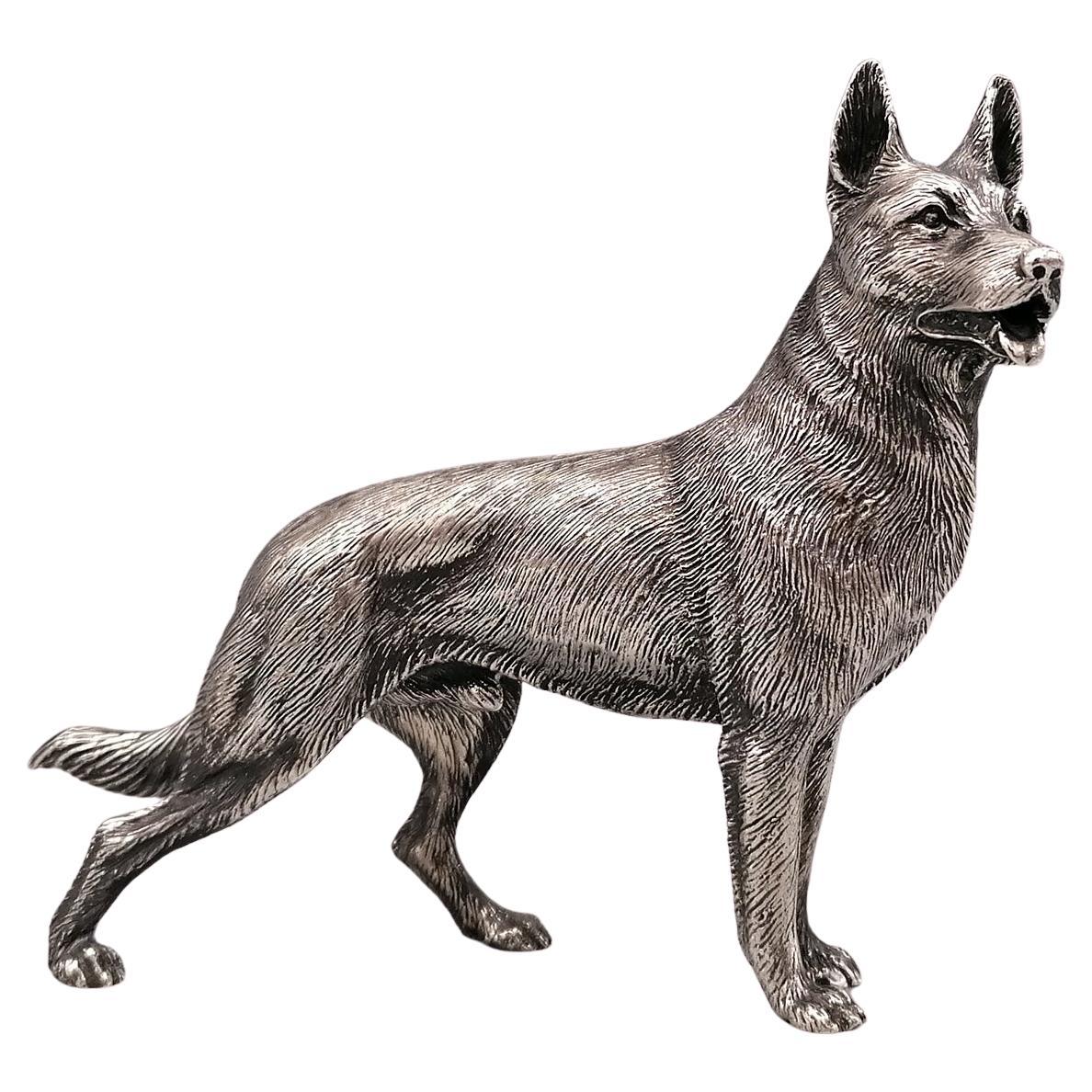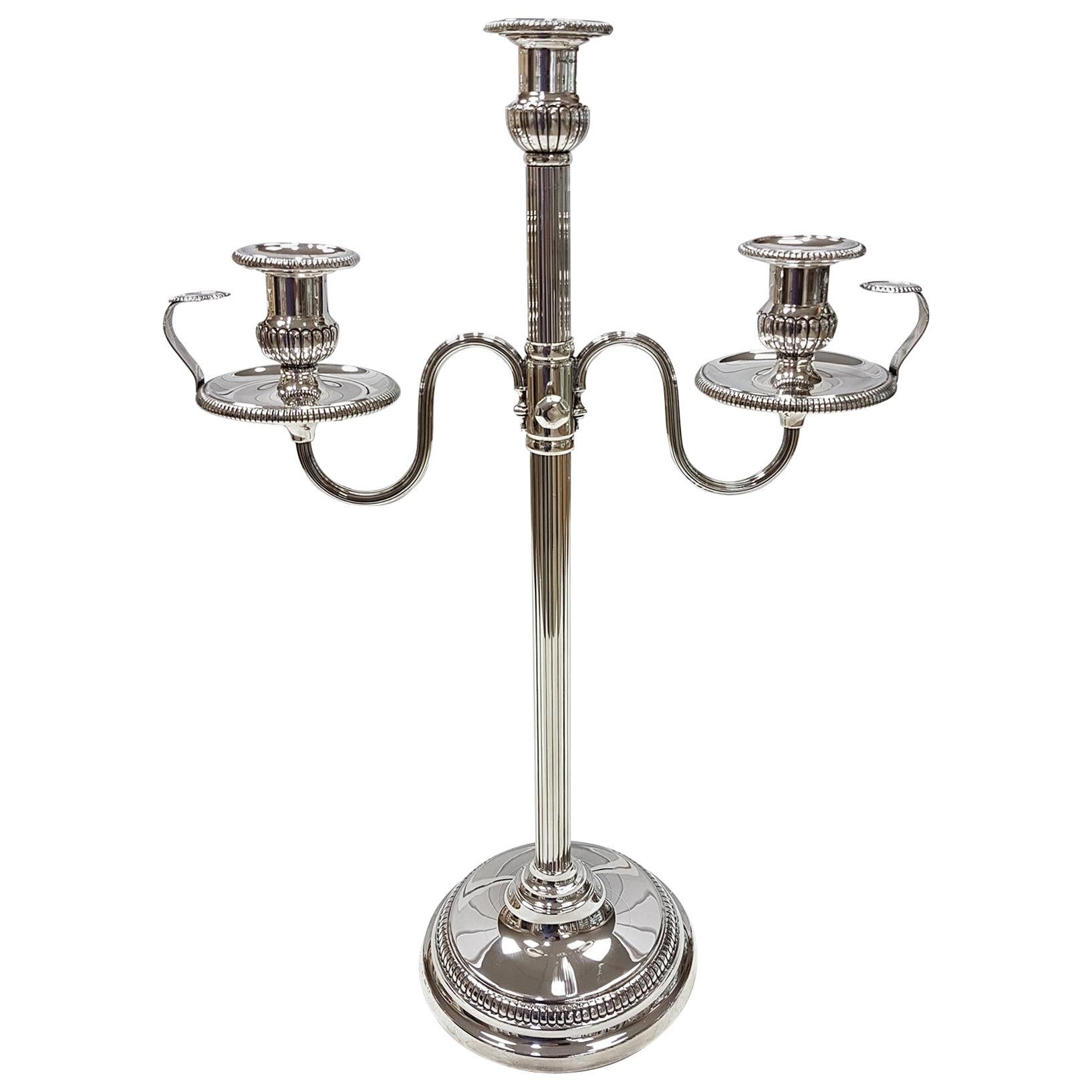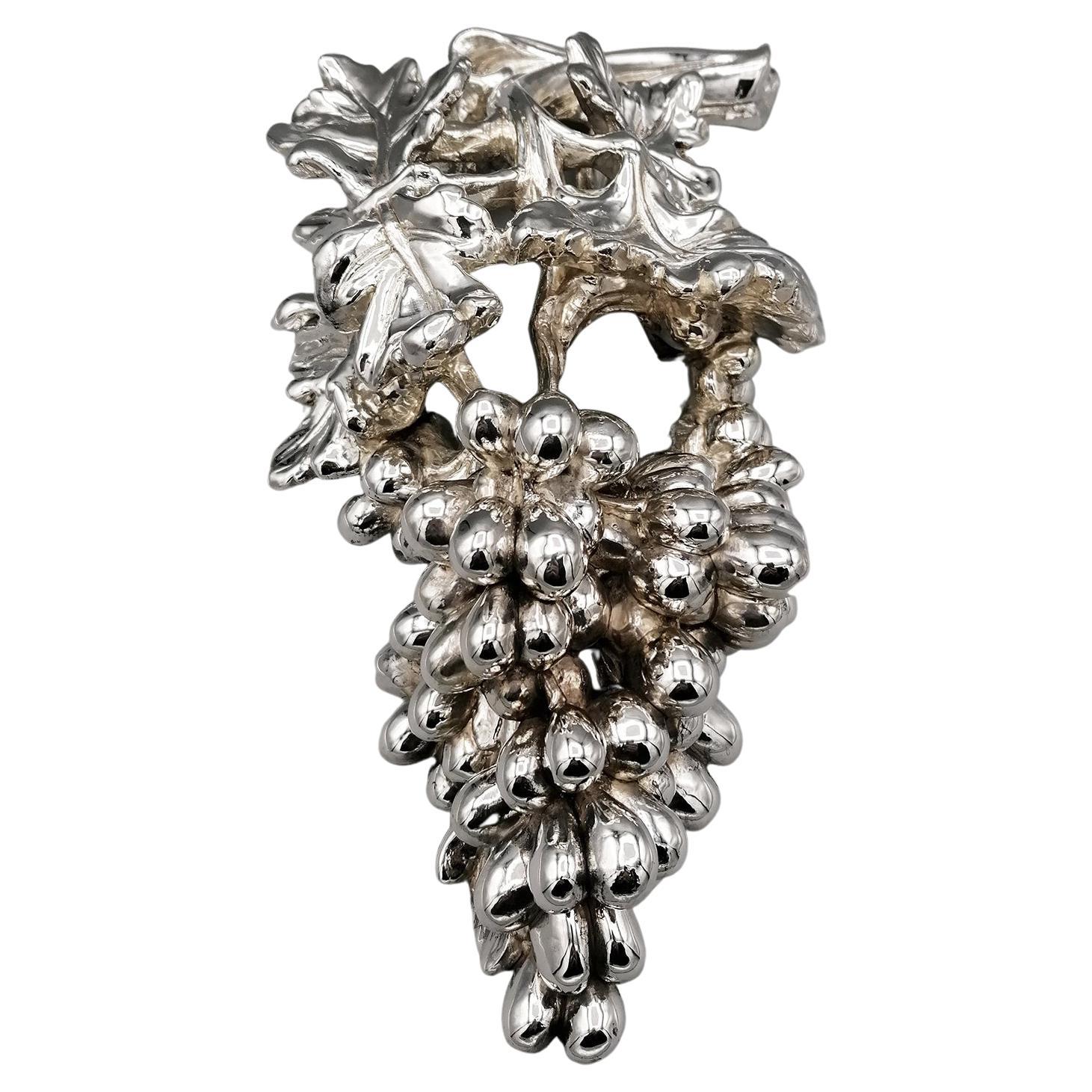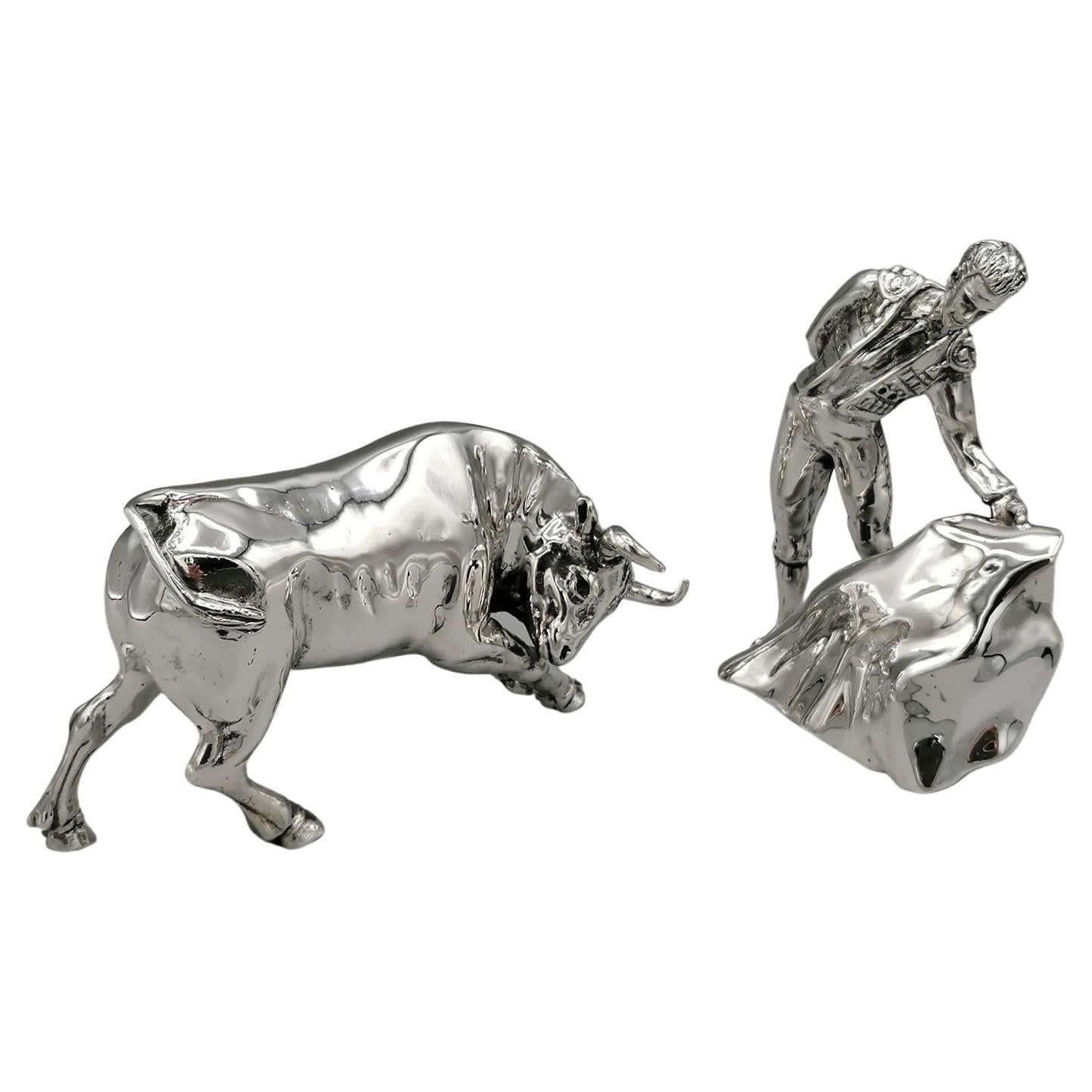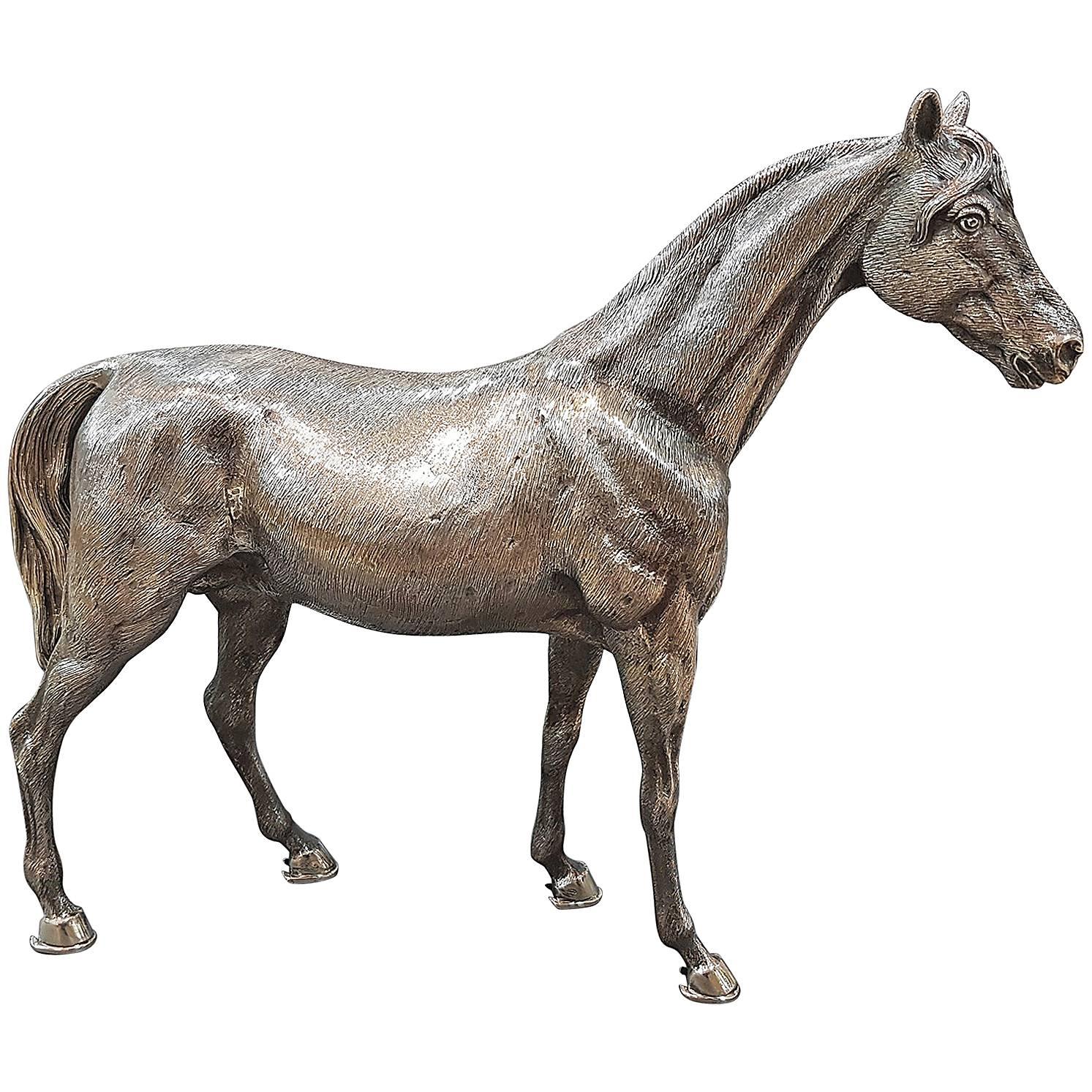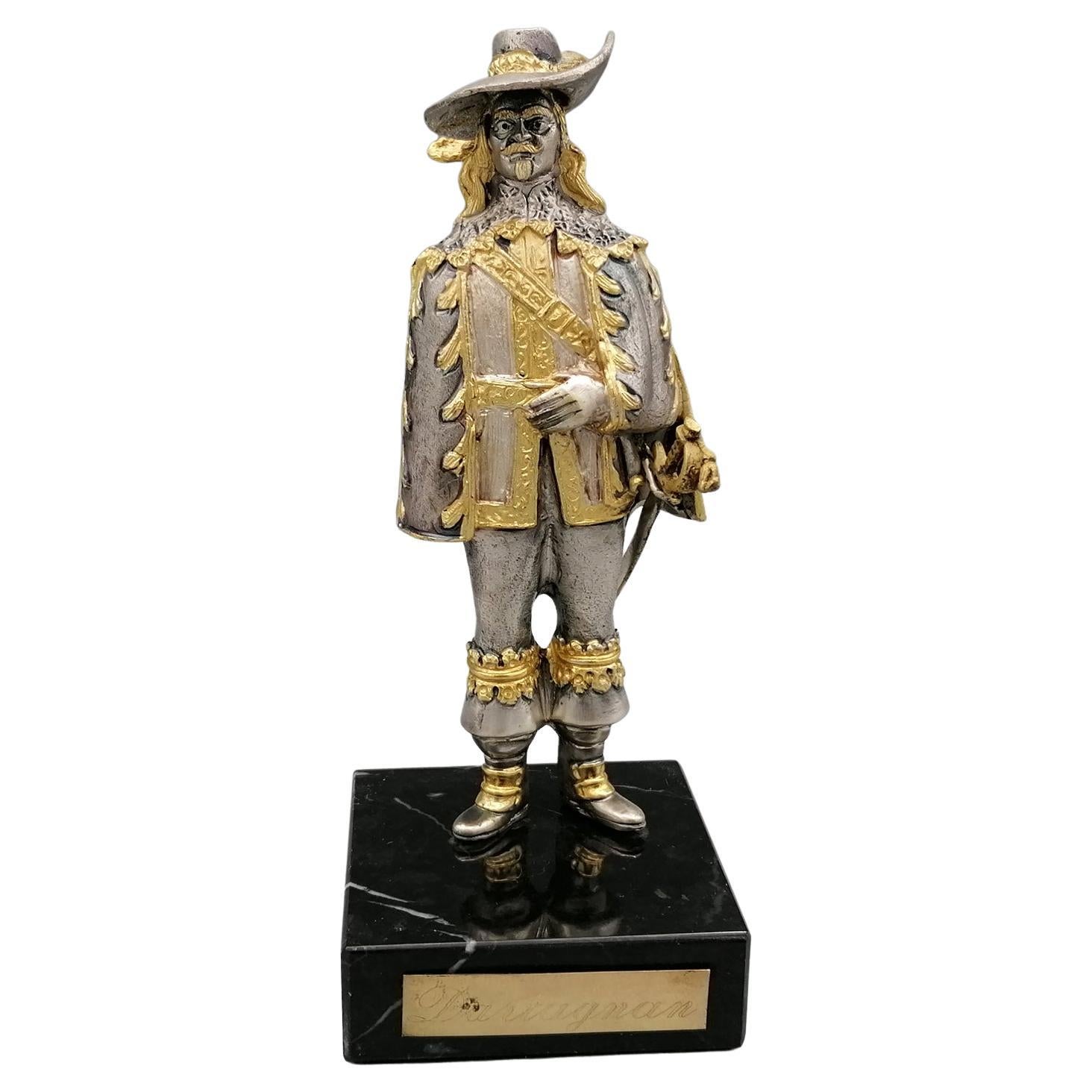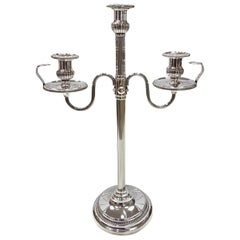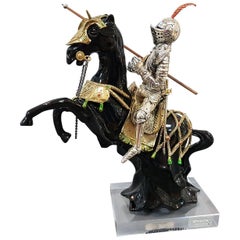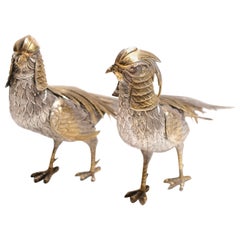
20th Century Italian Sterling Silver Cornucopia
View Similar Items
Want more images or videos?
Request additional images or videos from the seller
1 of 16
20th Century Italian Sterling Silver Cornucopia
About the Item
- Creator:Italo Gori (Maker)
- Dimensions:Height: 5.12 in (13 cm)Width: 13.78 in (35 cm)Depth: 7.88 in (20 cm)
- Style:Neoclassical Revival (In the Style Of)
- Materials and Techniques:
- Place of Origin:
- Period:1990-1999
- Date of Manufacture:1990
- Condition:The item will be sold in perfect condition.
- Seller Location:VALENZA, IT
- Reference Number:1stDibs: LU2619314371222
About the Seller
5.0
Gold Seller
These expertly vetted sellers are highly rated and consistently exceed customer expectations.
Established in 1967
1stDibs seller since 2017
112 sales on 1stDibs
Typical response time: 3 hours
More From This SellerView All
- 20th Century Italian Sterling Silver German Shepherd Dog SculptureBy Arval Argenti ValenzaLocated in VALENZA, ITGerman Shepherd dog sculpture in sterling silver. The sculpture of the German Shepherd dog was made with the 925 sterling silver casting method and masterfully finished with chisel ...Category
Late 20th Century Italian Other Animal Sculptures
MaterialsSterling Silver
- 20th Century Italian Sterling Silver 3 Lights Telescopic CandelabraBy VavassoriLocated in VALENZA, ITElegant candelabra in 925 sterling silver with central stem and striped arms. The two side candle holders are detachable and become two chambers ticks cm. 11 H. 5.5 . The "fluted" ...Category
1990s Italian Neoclassical Revival Sterling Silver
MaterialsSterling Silver
- 20th Century Sterling Made in Italy Silver Horse and Knight ArmourBy Argenteria EtruriaLocated in VALENZA, ITHorse in black lacquered resin with a sterling silver armor with Italian XIV Century Knight in sterling silver armor with golden and enamelled details.Category
Vintage 1980s Italian Medieval Sterling Silver
MaterialsSterling Silver
- 20th Century Made in Italy Sterling Silver Horse and Knight ArmourBy Argenteria EtruriaLocated in VALENZA, ITHorse in black lacquered resin with a sterling silver armor with Russian 14th century knight in sterling silver armor with golden and enameled details.Category
Vintage 1980s Italian Medieval Sterling Silver
MaterialsSterling Silver
- 20th Century Italian Sterling Silver CaldlesticksBy Arval Argenti ValenzaLocated in VALENZA, ITPair of sterling silver candlesticks, depicting Hercules holding the world. The figure of Hercules and the candle holder are in 925 silver while the world and the base are in rutinia...Category
Vintage 1980s Italian Greek Revival Sterling Silver
MaterialsSterling Silver
- 20th Century Italian Solid Silver Camel SculptureBy Arval Argenti ValenzaLocated in VALENZA, ITSolid 800 silver camel. The sculpture was made with the casting technique and then finished completely by hand by expert chisellers to make the camel's f...Category
Vintage 1980s Italian Other Animal Sculptures
MaterialsSilver
You May Also Like
- 20th Century Maciel Mexican Sterling Silver Tea SetBy Maciel Silver Co.Located in Guaynabo, PRThis tea set is made by renown craftsmen Maciel of Mexico. It was made in sterling silver with embellished fluted lobed decoration. The set contains 6 pieces and all of them are hall...Category
20th Century Mexican Neoclassical Revival Tea Sets
MaterialsSterling Silver
- Pair of 20th Century Silver PheasantsLocated in Los Angeles, CAPair of 800 silver pheasants. Gold vermeil. European (probably Austria).Category
Early 20th Century Austrian Sterling Silver
MaterialsSilver
$2,475 / set - Early 20th Century Italian Sterling Silver ChaliceLocated in Casale Monferrato, ITItalian sterling silver Chalice finely embossed and chiselled 800 punch at the base. cup in golden bath. Excellent condition with its original packaging.Category
Vintage 1930s Italian Sterling Silver
MaterialsSilver
- 20th Century Pirced Handicraft Sterling Silver Serving Tray, Italy, 1998By Ditta Messulam EnricoLocated in Cagliari, ITGorgeous sterling silver two handled serving tray. Splendid work of the great Italian silversmiths. The wonderful hand-made work makes the edges of this object look like a lace. M...Category
1990s Italian Baroque Revival Platters and Serveware
MaterialsSterling Silver
- 19th Century Italian Sterling Silver Madonna, circa 1830Located in Milano, ITEmbossed and engraved silver plaque La Madonna del lago (The Madonna of the Lake) Probably Milan, post 1824 Brass frame It measures 16.14 in x 13.85 in (41 x 35.2 cm) and it weighs 10.357 pounds (4.698 g): silver 1.31 pounds (598 g) + brass 9.03 pounds (4.100 g) State of conservation: some abrasions on the bottom. The frame is old, but not original. The plaque is made up of a sheet of embossed and engraved silver, and held in a solid brass frame. It depicts the “Madonna del lago” – “Madonna of the Lake” - (the Madonna with Child and San Giovannino) by Marco d'Oggiono (Oggiono, 1474 circa - Milan, 1524 circa), while changing only the background landscape. Almost certainly the subject reproduced in the plaque was taken from a famous engraving by Giuseppe Longhi (Monza, 1766 - Milan, 1831), one of the greatest engravers of his era. The silver is unmarked, probably because originally the Madonna was due to be exposed in a church: sometimes precious metals destined for worship and liturgical use would be exempted from payment and were, therefore, not marked. It is very likely that the plaque was made in Milan because in this city in 1824 the engraving by Giuseppe Longhi was made and printed. In addition, in Milan, the alleged lost painting by Leonardo da Vinci in his Milanese period (1482-1500) would be produced; this is the painting from which Marco d'Oggiono took his version. The painting Marco d?Oggiono was one of Leonardo da Vinci's most brilliant students and collaborators (D. Sedini, Marco d’Oggiono, tradizione e rinnovamento in Lombardia tra Quattrocento e Cinquecento, Roma 1989, pp. 151-153, n. 56; p. 225, n. 124, with previous bibliography). His style reflects in every way that of the Tuscan Maestro, so much so that he was the one who executed some copies of da Vinci's paintings. The execution of the “Madonna del Lago” probably draws inspiration from a lost painting by the Maestro, created while he was living in Milan (1482-1500). There are many similarities with other works by Leonardo such as the “Vergine delle rocce” or the “Vergine con il Bambino e San Giovannino, Sant’Anna e l’Agnello”. The painting, from which the drawing and then the famous engraving were taken, is found today at the M&G Museum of Bob Jones University in Greenville, South Carolina, where it came to rest after the sale of the Harrington Collection in London in 1917. The work appears in the inventories of the collection of Napoleon and Joséphine Bonaparte at the castle of Malmaison, before 1809. The Malmaison building was born and developed in the 17th and 18th centuries. In the 18th century it belonged to Jacques-Jean Le Coulteux du Molay, a wealthy banker. Later, during the Directory, Joséphine Bonaparte de Beauharnais bought it on April 21st, 1799, but settled at the castle definitively only after her husband separated from her in 1809. She remained there until 1814, the year of her death. When Joséphine died, the estate passed to her son Eugène de Beauharnais, who moved to Munich with his whole family in 1815, bringing with him the collection of paintings he inherited from his mother. Eugène died in 1824 and his wife Augusta of Bavaria (von Bayern), unable to keep it, in 1828 sold the Malmaison to the Swedish banker Jonas-Philip Hagerman. It is likely that in this period Augusta also sold part of the paintings inherited from her husband, including the “Madonna del Lago”. This painting then came into the possession of Leicester Stanhope, fifth Earl of Harrington (1784 - 1862) and then was passed down to his descendants. In 1917, at the death of Charles, eighth Earl of Harrington, his brother Dudley inherited the title and properties and he put up a part of his collections for sale. Among these, precisely, the painting by Marco d'Oggiono was to be found. On the occasion of that auction the painting was presented as a work by Cesare da Sesto, by virtue of a handwritten note by the Countess of Harrington on the back of the table. However, already in 1857, the German critic Gustav Waagen had identified Marco d'Oggiono as the author of the painting, then exhibited in the dining room of Harrington House in London (Treasures of Art in Great Britain, in 4 volumes, London, 1854 and 1857). The engraving Giuseppe Longhi was one of the most renowned engravers in Italy between the end of the 18th century and the first quarter of the 19th century. In 1824 Giuseppe Longhi, based on a design by Paolo Caronni, made a famous engraving of the painting of Marco d?Oggiono. The activity of Longhi was then at the peak of his notoriety, enough to earn him very substantial commissions; it is not risky to suppose that some of his successful engravings were also reproduced using other means: in our case in silver. (A. Crespi, a cura di, Giuseppe Longhi 1766–1831 e Raffaello Morghen...Category
Antique 1820s Italian Neoclassical Sterling Silver
MaterialsSterling Silver, Brass
- 20th Century, Royal Wedding Solid Silver Wager Cup, London, c.1973Located in Royal Tunbridge Wells, KentNovelty 20th century solid silver wager / marriage cup, the cups design inspired by the early 16th century German example, modelled as a female figure sup...Category
20th Century British Sterling Silver
MaterialsSilver
Recently Viewed
View AllMore Ways To Browse
Italian Fruit And Vegetables
Vintage Glass Fruit And Vegetables
Silver Cache
Tiffany Modern American Silver
Roman Gladiator
American Greek Revival
Attributed To Tiffany
Sterling Whistle
Horn Cornucopia
Sterling Fruit Basket
Glass Ruler
Vintage Furniture Victoria Australia
Sterling Silver Fruit Basket
Vintage 1990 Wine Glass
Horn Book
Vintage Kitchen Australia
Vintage Strawberry Kitchen
Tiffany Wine
